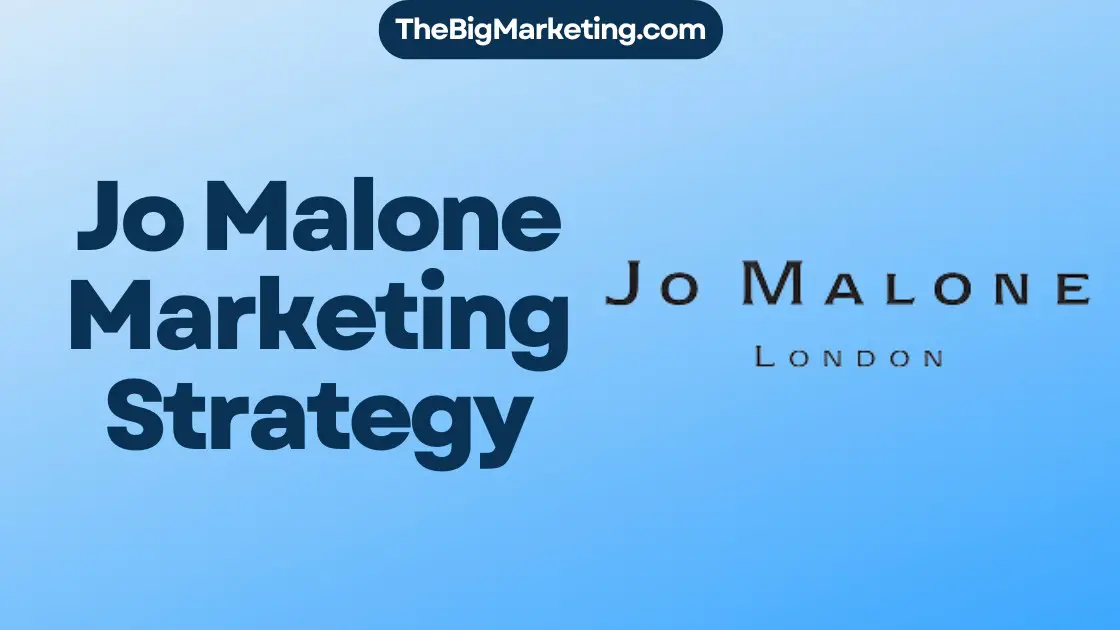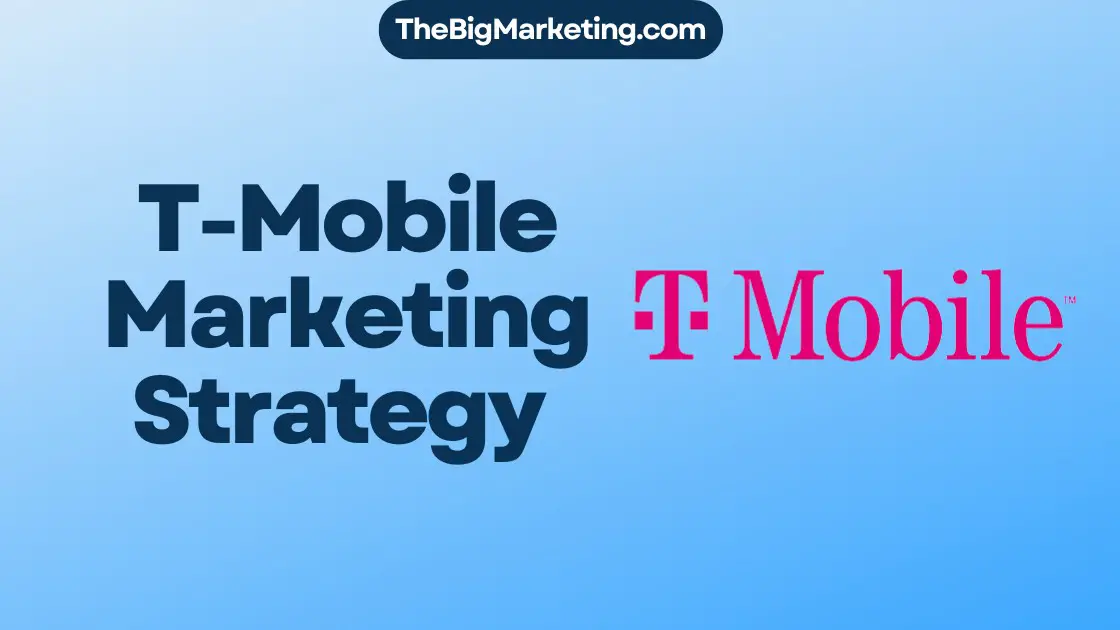Behavioral characteristics in marketing play a pivotal role in understanding consumer behavior patterns, motivations, and traits that influence their purchasing decisions. By delving into the realm of marketing psychology and conducting thorough consumer behavior analysis, businesses can unlock valuable insights to enhance their marketing strategies and drive success in the competitive landscape.
When marketers comprehend the behavioral characteristics of their target audience, they can segment consumers into distinct groups based on their buyer behavior patterns. This segmentation allows for personalized and targeted marketing campaigns that resonate with customers’ preferences, leading to improved customer engagement, increased conversion rates, and heightened customer satisfaction.
Key Takeaways:
- Behavioral characteristics in marketing refer to the study and analysis of consumer behavior patterns, traits, and motivations.
- Understanding and leveraging behavioral characteristics help marketers effectively target and engage customers.
- Behavioral segmentation is crucial for tailoring marketing efforts to specific customer groups.
- Types of behavioral segmentation include purchasing behavior, occasion purchasing, benefits sought, and loyalty.
- By employing behavioral segmentation, businesses can create personalized and targeted marketing campaigns.
The Importance of Behavioral Segmentation in Marketing
Behavioral segmentation is a fundamental component of marketing that enables businesses to customize their strategies according to the behavior and preferences of specific customer groups. By gaining an understanding of consumer behavior through customer behavior research and marketing psychology, businesses can identify the unique needs and motivations of different customer segments. This valuable insight allows marketers to develop targeted and effective marketing campaigns that resonate with their target audience.
One of the key advantages of behavioral segmentation in marketing is the ability to increase customer engagement. By tailoring marketing messages and offers to specific segments based on their behavior, businesses can create personalized experiences that resonate with customers and capture their attention. Customers are more likely to engage with marketing content that is relevant and speaks directly to their needs and interests, leading to higher levels of engagement and interaction.
Another significant benefit of behavioral segmentation is the potential for higher conversion rates. When marketing efforts are targeted towards specific customer segments, businesses can create compelling value propositions that address their unique needs and desires. By understanding consumer behavior, marketers can position their products or services in a way that aligns with the motivations of each segment, increasing the likelihood of converting leads into customers.
Additionally, behavioral segmentation can provide businesses with valuable insights into their marketing campaigns and return on investment (ROI). By tracking and analyzing customer behavior, businesses can assess the effectiveness of their marketing efforts and make data-driven decisions to optimize their strategies. This allows for continuous improvement and refinement of marketing campaigns, ultimately leading to improved ROI and marketing success.
Case Study: Nike’s Behavioral Segmentation Strategy
Nike, a global leader in athletic footwear and apparel, has successfully implemented behavioral segmentation in its marketing strategies. One notable example is Nike’s use of personalized email marketing based on customer behavior. By leveraging data on customer preferences, purchase history, and browsing behavior, Nike sends targeted and relevant emails to customers, showcasing products that align with their interests and purchase patterns.
This personalized approach not only increases customer engagement but also drives conversions by presenting customers with products that they are more likely to be interested in. By understanding consumer behavior and leveraging behavioral segmentation, Nike has been able to create a tailored and customer-centric experience, resulting in increased customer loyalty and brand affinity.
| Benefits of Behavioral Segmentation in Marketing |
|---|
| Customized marketing messages and offers |
| Increased customer engagement |
| Higher conversion rates |
| Improved ROI and marketing success |
Types of Behavioral Segmentation
When it comes to understanding consumer behavior for effective marketing, behavioral segmentation is a powerful tool. It allows marketers to categorize their target audience based on various behavioral patterns and preferences. By utilizing behavioral segmentation, businesses can create targeted marketing strategies that resonate with their customers. Here are the key types of behavioral segmentation:
Purchasing Behavior Segmentation
Purchasing behavior segmentation focuses on analyzing customers’ shopping habits and preferences. It involves understanding how frequently they make purchases, the types of products they buy, and their buying patterns. This segmentation helps businesses identify their customer segments such as regular customers who frequently purchase, occasional users who make sporadic purchases, offer seekers who seek discounts and promotions, and impulsive buyers who make spontaneous purchases.
Occasion Purchasing Segmentation
Occasion purchasing segmentation looks at customers’ purchasing behavior related to specific events or occasions. Marketers analyze customers’ buying patterns during holidays and celebrations, special events, or seasonal occasions. By understanding the occasions that drive customer purchase behavior, businesses can create relevant marketing campaigns and promotions. For example, a clothing brand might create a marketing campaign targeting customers looking for outfits for graduation parties or summer vacations.
Benefits Sought Segmentation
Benefits sought segmentation categorizes customers based on the specific benefits they seek from a product or service. Marketers identify the core values and desires customers look for and align their marketing messages accordingly. Some customers might seek convenience, while others prioritize affordability, performance, status, or innovation. By understanding customers’ desired benefits, businesses can tailor their products and marketing strategies to meet those needs and preferences, effectively attracting and engaging their target audience.
Loyalty Segmentation
Loyalty segmentation groups customers based on their level of engagement and loyalty to a brand or product. By analyzing past behavior and customer interactions, businesses can identify loyal customers who are more likely to make repeat purchases and advocate for the brand. They can then develop targeted marketing strategies, such as loyalty programs or exclusive offers, to retain and increase customer engagement. This segmentation helps businesses build long-term relationships with their most valuable customers.
By utilizing the different types of behavioral segmentation, businesses can gain deeper insights into customer behavior and preferences. This empowers marketers to create personalized marketing messages and campaigns that drive engagement, improve conversion rates, and foster customer loyalty.
Purchasing Behavior Segmentation
Understanding consumer behavior is crucial for businesses to create effective marketing strategies. One key aspect of consumer behavior analysis is purchasing behavior segmentation, which involves categorizing customers based on their shopping habits and preferences.
When it comes to purchasing behavior, several factors are considered, including the frequency and number of purchases, types of products bought, and buying patterns. By analyzing these factors, businesses can gain valuable insights into their customers’ preferences and tailor their marketing approaches accordingly.
Let’s take a closer look at some behavioral segments based on purchasing behavior:
- Regular Customers: These are customers who frequently make purchases from a particular business. They exhibit consistent shopping habits and tend to be loyal to the brand.
- Occasional Users: Occasional users make purchases sporadically, without a specific pattern or frequent engagement with a brand.
- Offer Seekers: These customers are highly motivated by discounts, promotions, and special offers. They actively seek out the best deals before making a purchase.
- Impulsive Buyers: Impulsive buyers make spontaneous purchases without much consideration or prior planning. They are driven by immediate gratification and are often influenced by factors such as product displays or limited-time offers.
By understanding the different segments within purchasing behavior, businesses can tailor their marketing messages and offers to appeal to each group. For example, regular customers can be rewarded with loyalty programs or exclusive discounts, while offer seekers can be targeted with promotional campaigns highlighting discounts and limited-time offers.
Unlocking the Power of Purchasing Behavior Segmentation
Purchasing behavior segmentation provides businesses with valuable insights into their customers’ preferences, motives, and patterns. By leveraging this information effectively, businesses can:
- Increase customer engagement and satisfaction by delivering personalized marketing messages and offers.
- Improve marketing campaign performance by targeting the right audience with the most relevant promotions.
- Encourage repeat purchases and customer loyalty by delivering a tailored customer experience.
With the advancements in technology and data analysis, businesses now have access to sophisticated tools and platforms that enable them to gather and analyze consumer behavior data effectively. These insights can inform marketing strategies, drive customer acquisition, and enhance overall business performance.
Ultimately, by understanding and utilizing purchasing behavior segmentation, businesses can optimize their marketing efforts, attract the right customers, and foster long-term relationships based on trust and satisfaction.
| Benefits of Purchasing Behavior Segmentation |
|---|
| Personalized marketing messages and offers |
| Improved targeting and campaign performance |
| Increased customer engagement and loyalty |
| Optimized marketing efforts and resource allocation |
Occasion Purchasing Segmentation
Occasion purchasing segmentation plays a vital role in understanding consumer behavior and buyer behavior patterns. By categorizing customers based on their purchasing habits related to specific occasions or events, businesses can create targeted marketing campaigns that resonate with their target audience. This form of segmentation takes into account holidays and celebrations, special events, and seasonal occasions that influence consumer spending habits.
For example, during Valentine’s Day, businesses can develop marketing strategies that cater to customers looking for gifts for their loved ones. Similarly, travel companies can create campaigns targeting customers planning their summer vacations. By identifying and understanding the occasions that drive purchase behavior, businesses can deliver timely and relevant marketing messages to increase customer engagement and sales.
Let’s take the example of a clothing brand that specializes in swimwear. By introducing a summer collection and designing a marketing campaign focused on vacation essentials, they can attract customers who are likely to make purchases before heading to their planned vacations or trips. In this way, occasion purchasing segmentation enables businesses to align their marketing efforts with the specific needs and motivations of their target audience, maximizing their chances of success.
Understanding consumer behavior related to occasions and events provides valuable insights into the types of products or services that customers are more likely to be interested in during those times. By leveraging these insights, businesses can craft compelling marketing messages, create relevant offers, and deliver a personalized shopping experience that resonates with their customers’ desires and preferences.
In the image above, we see an example of occasion purchasing segmentation in action. The table showcases different occasions/events, customer behaviors, and corresponding marketing strategies that businesses can employ to effectively target their customers during those times. This data-driven approach helps businesses understand the buyer behavior patterns associated with specific occasions and tailor their marketing efforts accordingly.
Benefits Sought Segmentation
In marketing, benefits sought segmentation plays a vital role in understanding consumer behavior and shaping effective marketing strategies. This segmentation approach involves categorizing customers based on the specific benefits they seek from a product or service. By identifying and catering to these desired benefits, businesses can create targeted marketing messages and product offerings that resonate with their target audience, driving customer engagement and satisfaction.
The Importance of Consumer Behavior Analysis
Consumer behavior analysis is crucial in benefits sought segmentation as it provides insights into the motivations and preferences that drive customers’ purchasing decisions. By conducting thorough consumer behavior research, businesses can gain a deep understanding of their target audience’s needs and desires, enabling them to align their marketing efforts accordingly. This analysis helps to uncover the emotional, functional, and social benefits that customers seek from a product or service, enabling businesses to tailor their strategies for maximum impact.
Utilizing Marketing Psychology to Drive Engagement
Marketing psychology, rooted in understanding consumer behavior, plays a key role in benefits sought segmentation. By tapping into consumers’ emotions, aspirations, and motivations, businesses can leverage marketing psychology to create compelling messages and experiences. For example, a high-fashion brand may emphasize the status and prestige associated with its products to attract customers who seek that benefit. By aligning marketing strategies with consumer psychology, businesses can effectively engage and connect with their target audience.
Crafting Targeted Marketing Messages
Once businesses have identified the specific benefits sought by their target audience, they can craft targeted marketing messages that highlight those benefits. By emphasizing convenience, affordability, performance, status, innovation, or other desired benefits, businesses can effectively communicate the value proposition of their products or services. This helps to capture the attention of prospective customers and differentiate themselves from competitors, ultimately driving conversions and customer loyalty.
Creating Product Offerings That Resonate
Benefits sought segmentation also informs product development and innovation. By aligning product offerings with the desired benefits of their target audience, businesses can create products and services that resonate with consumers’ needs and preferences. This enhances customer satisfaction and loyalty, as customers perceive the products as valuable solutions that address their specific desires. Businesses can leverage benefits sought segmentation to identify gaps in the market and develop differentiated offerings that meet the evolving demands of their target audience.
Applying Benefits Sought Segmentation Effectively
To effectively apply benefits sought segmentation, businesses should conduct thorough market research and consumer behavior analysis. This includes gathering quantitative and qualitative data, conducting surveys and interviews, and analyzing customer feedback. By gaining a comprehensive understanding of the benefits that drive consumer behavior, businesses can develop targeted marketing strategies and create personalized experiences that resonate with their target audience.
Ultimately, benefits sought segmentation enables businesses to align their marketing efforts with customer preferences and motivations. By understanding and fulfilling the desired benefits of their target audience, businesses can cultivate strong customer relationships, drive engagement and conversions, and ultimately achieve marketing success.
Examples of Benefits Sought Segmentation
| Industry | Brand/Product | Desired Benefits |
|---|---|---|
| Fitness | Peloton | Convenience, At-home workouts, Community |
| Food & Beverage | Starbucks | Quality, Taste, Status |
| Automotive | Tesla | Performance, Sustainability, Innovation |
Loyalty Segmentation
In the world of marketing, loyalty segmentation plays a vital role in understanding customer behavior and maximizing customer satisfaction. This segmentation strategy involves grouping customers based on their past behavior and level of engagement with a brand, allowing businesses to identify and target their most loyal customers.
When businesses understand their loyal customer base, they can develop effective marketing strategies to retain and further engage these valuable individuals. One way to enhance customer loyalty is by implementing loyalty programs, such as reward points or exclusive offers, that incentivize customers to continue their relationship with a brand.
By focusing on loyalty segmentation, businesses can enhance their customer retention rates, increase customer lifetime value, and foster long-term relationships with their most devoted customers.
Implementing loyalty segmentation requires thorough customer behavior research and an understanding of the key factors that drive customer loyalty. By analyzing customer data and identifying patterns, businesses can unlock valuable insights that shape their marketing strategies and improve their overall success.
For example, a brand may identify that customers who frequently purchase from their online store and actively engage with their loyalty program have a higher likelihood of remaining loyal in the long run. Armed with this knowledge, the brand can tailor marketing campaigns and special offers specifically to this segment, ensuring their continued loyalty and repeat business.
Example Table: Loyalty Segmentation Data
| Segment | Description |
|---|---|
| Frequent Buyers | Customers who make regular purchases and actively engage with loyalty programs |
| New Customers | Customers who have recently made their first purchase |
| Inactive Customers | Customers who have not made a purchase or engaged with the brand for a certain period of time |
| Brand Advocates | Customers who consistently promote and recommend the brand to others |
Using this loyalty segmentation data, businesses can create targeted marketing campaigns, personalized offers, and loyalty rewards to nurture and strengthen their relationship with each segment. By prioritizing the retention and satisfaction of their loyal customers, businesses can maximize their overall success and further establish their brand in the market.
Behavioral Segmentation Strategies
When it comes to effectively utilizing behavioral segmentation in marketing campaigns, businesses can employ several strategies to create personalized and targeted messaging that resonates with their customers. By understanding consumer behavior and employing these strategies, businesses can drive higher engagement and conversions. Let’s explore some effective behavioral segmentation strategies:
1. Retargeting Desired Behaviors
Understanding consumer behavior
Incorporating retargeting techniques is a powerful way to influence consumer behavior. By analyzing customer actions and behaviors on your website or app, you can retarget those who have shown interest in certain products or services. For example, if a customer added items to their shopping cart but did not complete the purchase, you can retarget them with personalized ads or offers to encourage them to complete the transaction.
2. Segmenting by Location
marketing behavior traits
Segmenting your customers based on their location allows you to create location-specific marketing campaigns. This strategy enables businesses to cater their messaging to local preferences, cultural nuances, and geographical factors. By tailoring your marketing efforts to the specific needs and interests of different locations, you can increase the relevance of your campaigns and resonate better with your target audience.
3. Pricing Based on Customer Segments
behavioral segmentation in marketing
Understanding consumer behavior patterns related to pricing can help businesses optimize their pricing strategies. By segmenting customers based on their willingness to pay or price sensitivity, businesses can offer dynamic pricing, discounts, or personalized pricing options. This strategy allows you to maximize revenue by providing tailored pricing that meets the unique needs and budgets of different customer segments.
4. Recommending Complementary Products
marketing behavior traits
By analyzing consumer behavior and purchase history, businesses can recommend complementary products to their customers. These recommendations are based on the understanding that certain products are often purchased together or that customers who buy a specific product are likely to be interested in related items. This strategy helps increase cross-selling opportunities and encourages customers to make additional purchases, ultimately driving higher revenue and customer satisfaction.
5. Employing Marketing Automation
behavioral segmentation in marketing, understanding consumer behavior
Marketing automation tools provide businesses with the ability to deliver personalized and timely messages to customers based on their behavior. By automating marketing campaigns triggered by specific customer actions, such as email clicks, website visits, or abandoned carts, businesses can nurture leads and engage customers throughout the buyer’s journey. This strategy ensures that customers receive relevant information and offers at the right time, leading to increased engagement and conversions.
Implementing these behavioral segmentation strategies can significantly enhance your marketing campaigns and improve customer engagement. By understanding consumer behavior, businesses can create targeted messaging that connects with their customers on a deeper level. Remember, effective behavioral segmentation relies on continuous analysis and refinement to ensure the strategies align with evolving customer preferences and behaviors.
Behavioral Marketing Examples
Behavioral segmentation in marketing can be effectively applied across various industries. Here are some successful examples of companies that have implemented behavioral marketing strategies:
1. Whiskey Loot
Whiskey Loot, an online whiskey subscription service, utilizes personalized email marketing to engage customers. By analyzing customer behavior and preferences, they send tailored emails recommending new whiskey selections based on individual tastes and purchase history. This personalized approach enhances customer satisfaction, increases brand loyalty, and drives repeat purchases.
2. Dyson
Dyson, a leading technology company, implements remarketing tactics to target customers who have shown interest in their products. By displaying ads to customers who have visited their website or interacted with their products but haven’t made a purchase, Dyson re-engages these potential customers, reminding them of the benefits and features of their products. This technique aims to increase conversion rates and drive sales.
3. Nike
Nike, a renowned sportswear brand, effectively uses cross-selling and upselling techniques to drive customer engagement and increase average order value. By recommending complementary products based on customers’ browsing and purchase history, such as matching workout apparel or accessories, Nike encourages customers to add more items to their cart, resulting in increased sales and customer satisfaction.
4. Trivago
Trivago, a popular hotel search engine, implements behavioral segmentation by recommending hotels based on customers’ previous search and booking behavior. By analyzing factors such as preferred destination, travel dates, and hotel preferences, Trivago presents personalized hotel suggestions that align with each customer’s unique preferences and travel patterns. This approach enhances the user experience and increases the likelihood of bookings.
5. Amazon
Amazon, the world’s largest online retailer, excels at product recommendations based on customer behavior. By leveraging advanced algorithms and artificial intelligence, Amazon analyzes customers’ browsing and purchase history to suggest relevant products that align with their interests and preferences. This personalized approach creates a seamless shopping experience and increases customer satisfaction.
By studying these examples, businesses can gain valuable insights into how behavioral segmentation can be applied in their own marketing campaigns. It is important to understand consumer behavior and tailor marketing efforts accordingly, ensuring a personalized and engaging experience for customers.
Conclusion
Understanding behavioral characteristics in marketing is crucial for businesses seeking to effectively target and engage their customers. By utilizing behavioral segmentation, businesses can tailor their marketing efforts to match customer behavior patterns, preferences, and motivations. This leads to increased customer engagement, higher conversion rates, and improved customer satisfaction.
Implementing behavioral marketing strategies and leveraging the power of consumer behavior analysis is the key to achieving marketing success and driving growth in the industry. By studying and analyzing consumer behavior, businesses gain valuable insights into the needs, desires, and motivations of their target audience.
Through behavioral segmentation, businesses can deliver personalized and targeted marketing messages that resonate with their customers, creating a deeper connection and increasing the likelihood of conversions. By understanding consumer behavior, businesses can identify opportunities, optimize marketing campaigns, and stay ahead in a competitive market.





